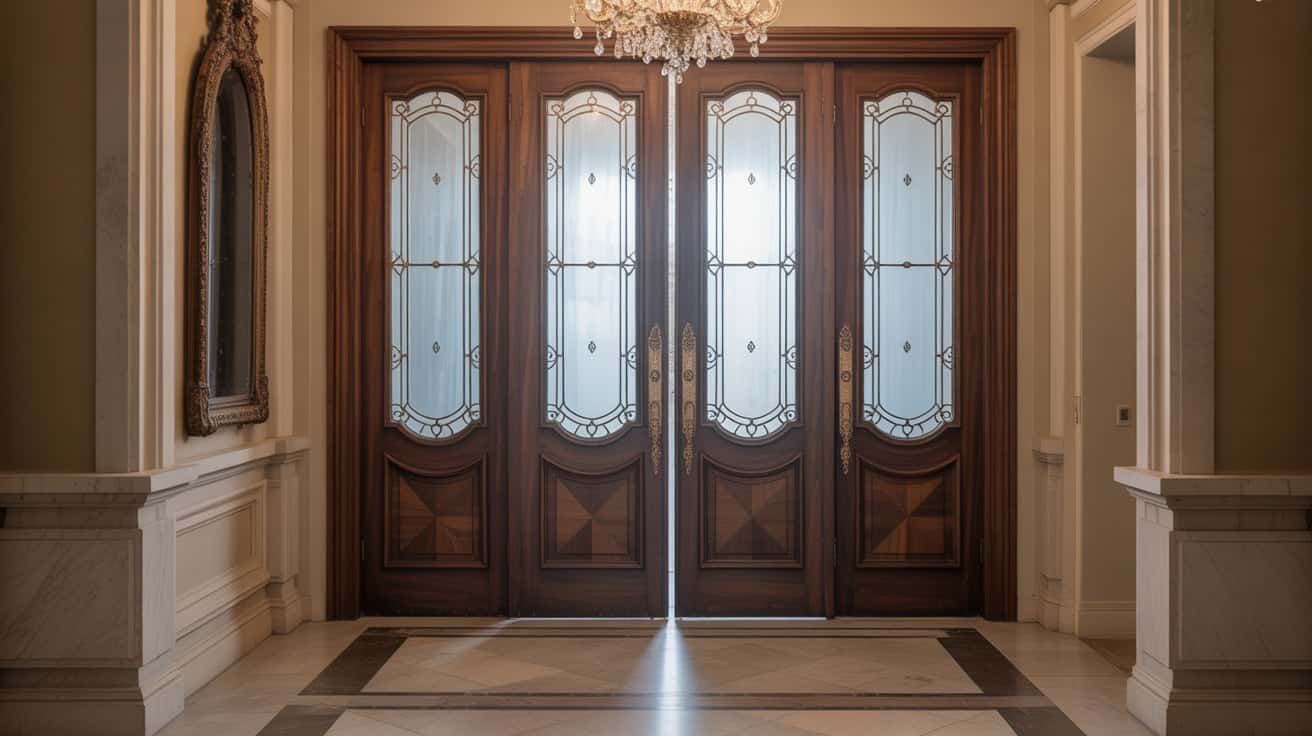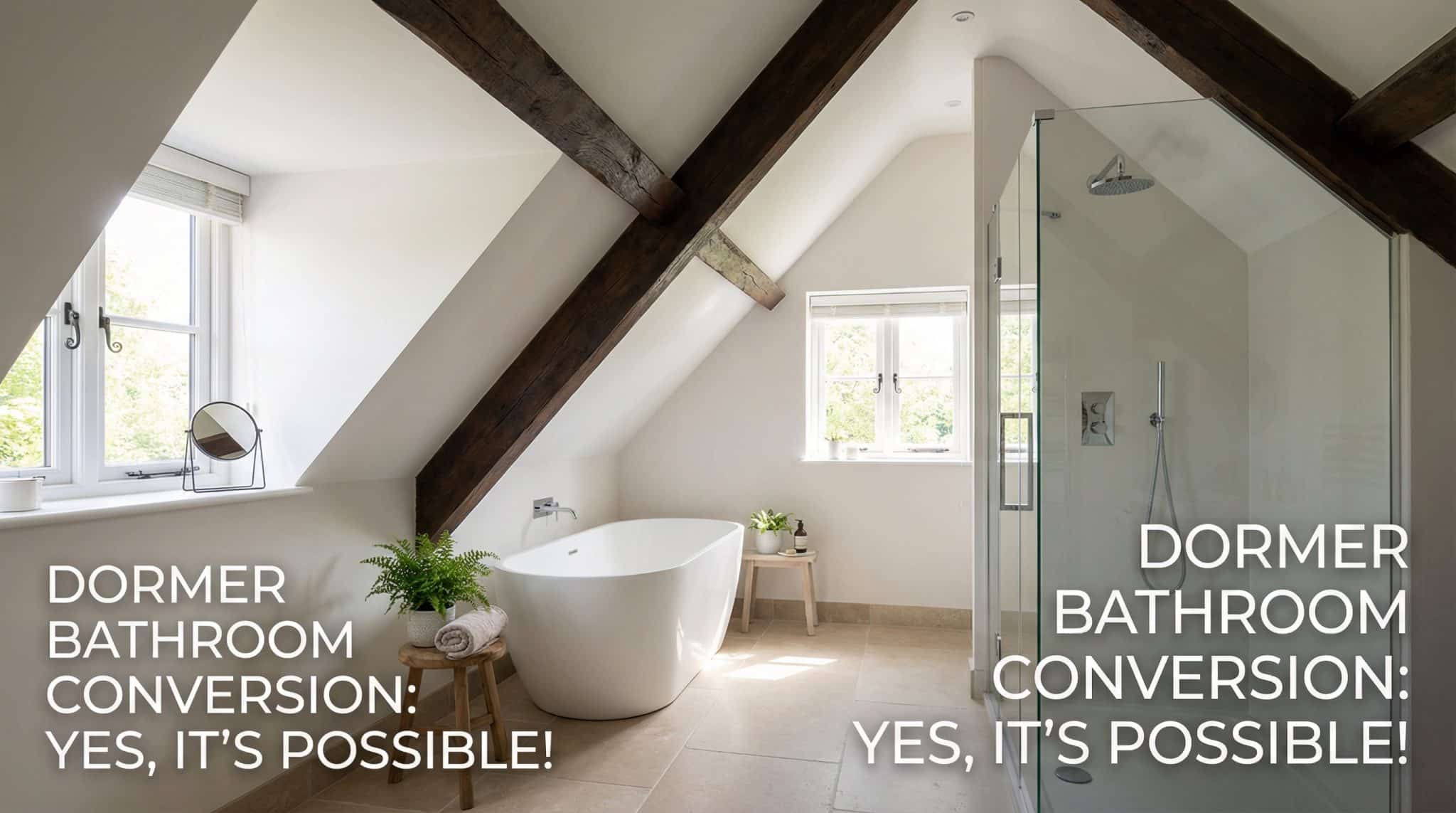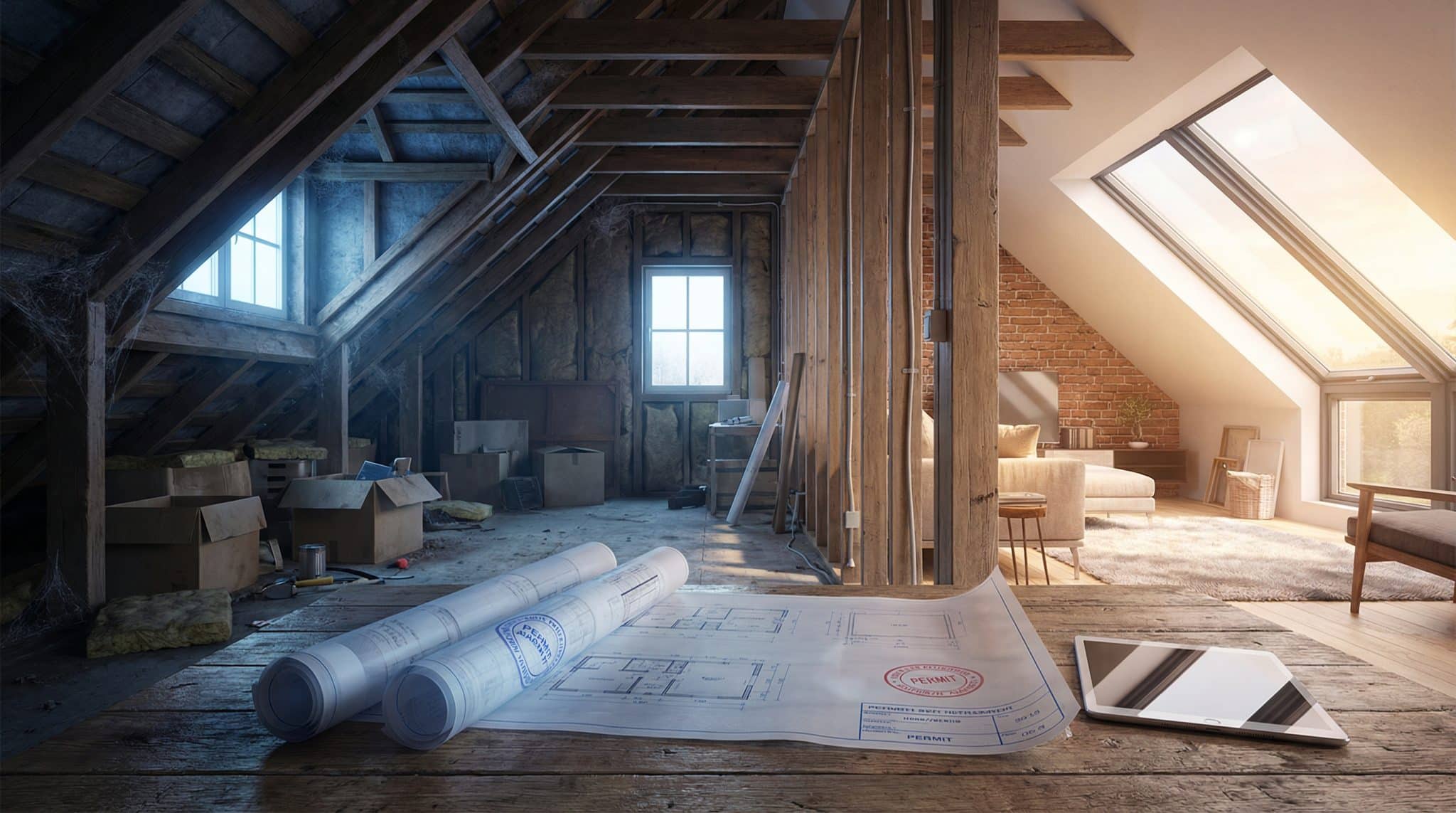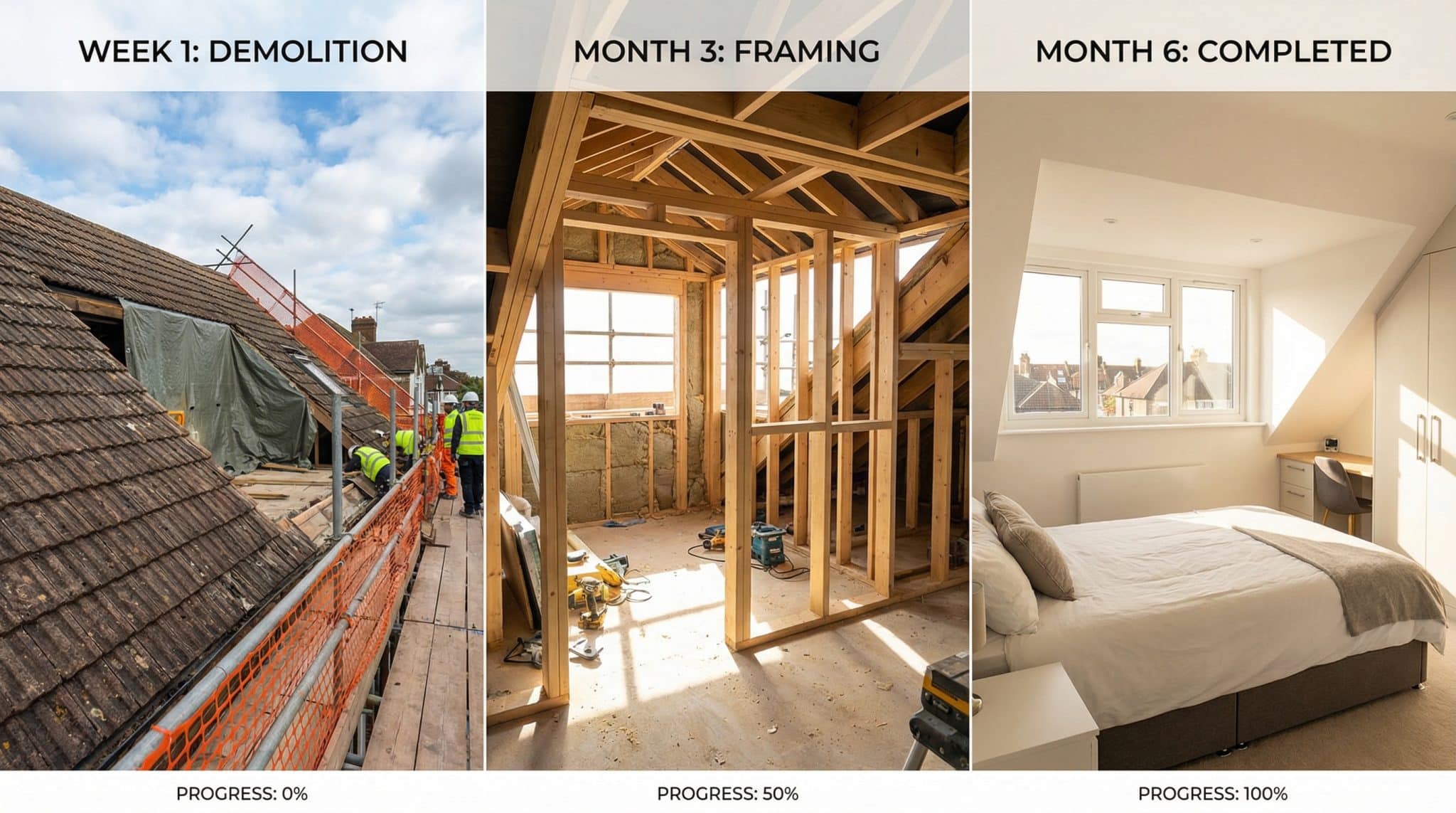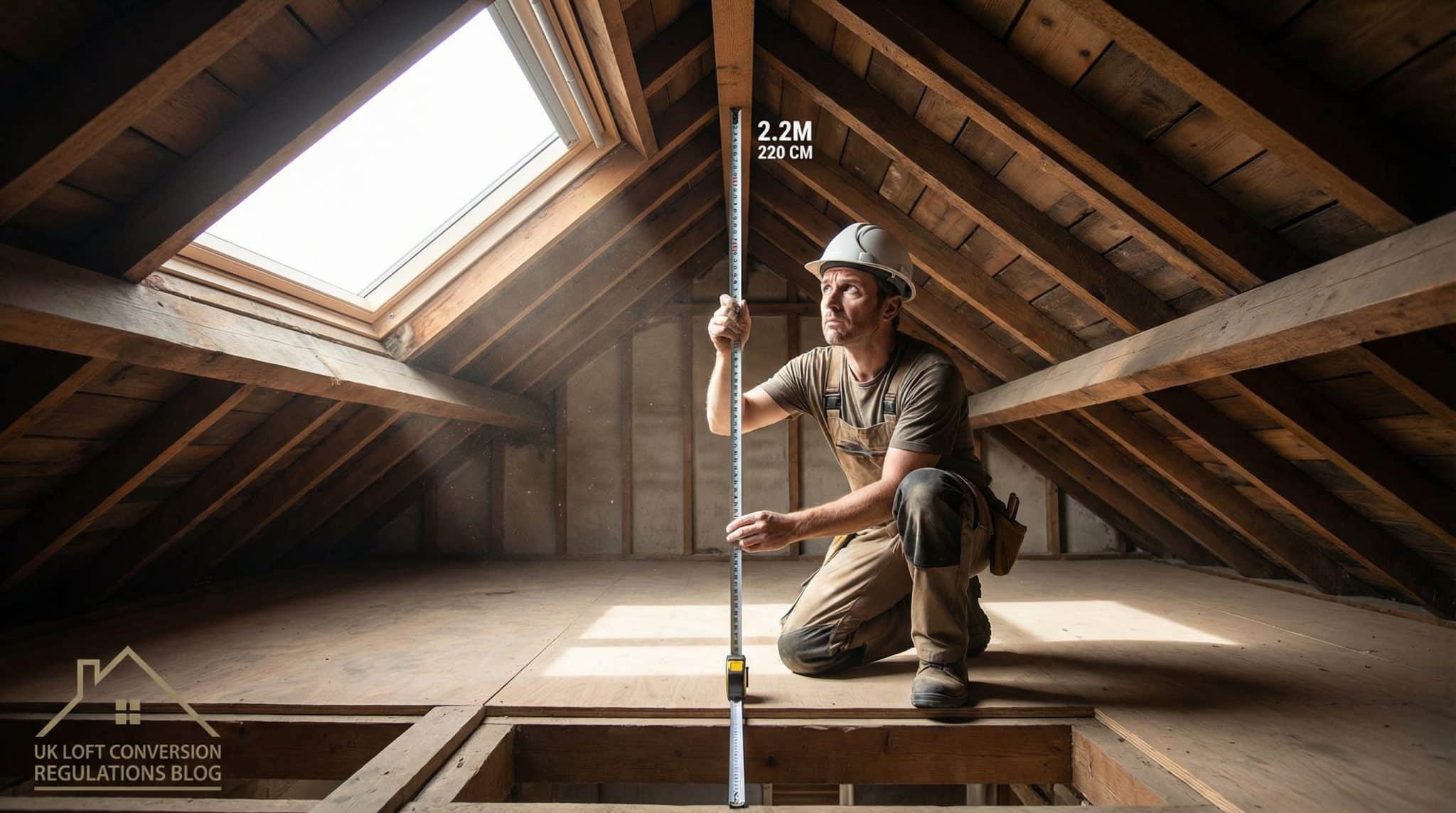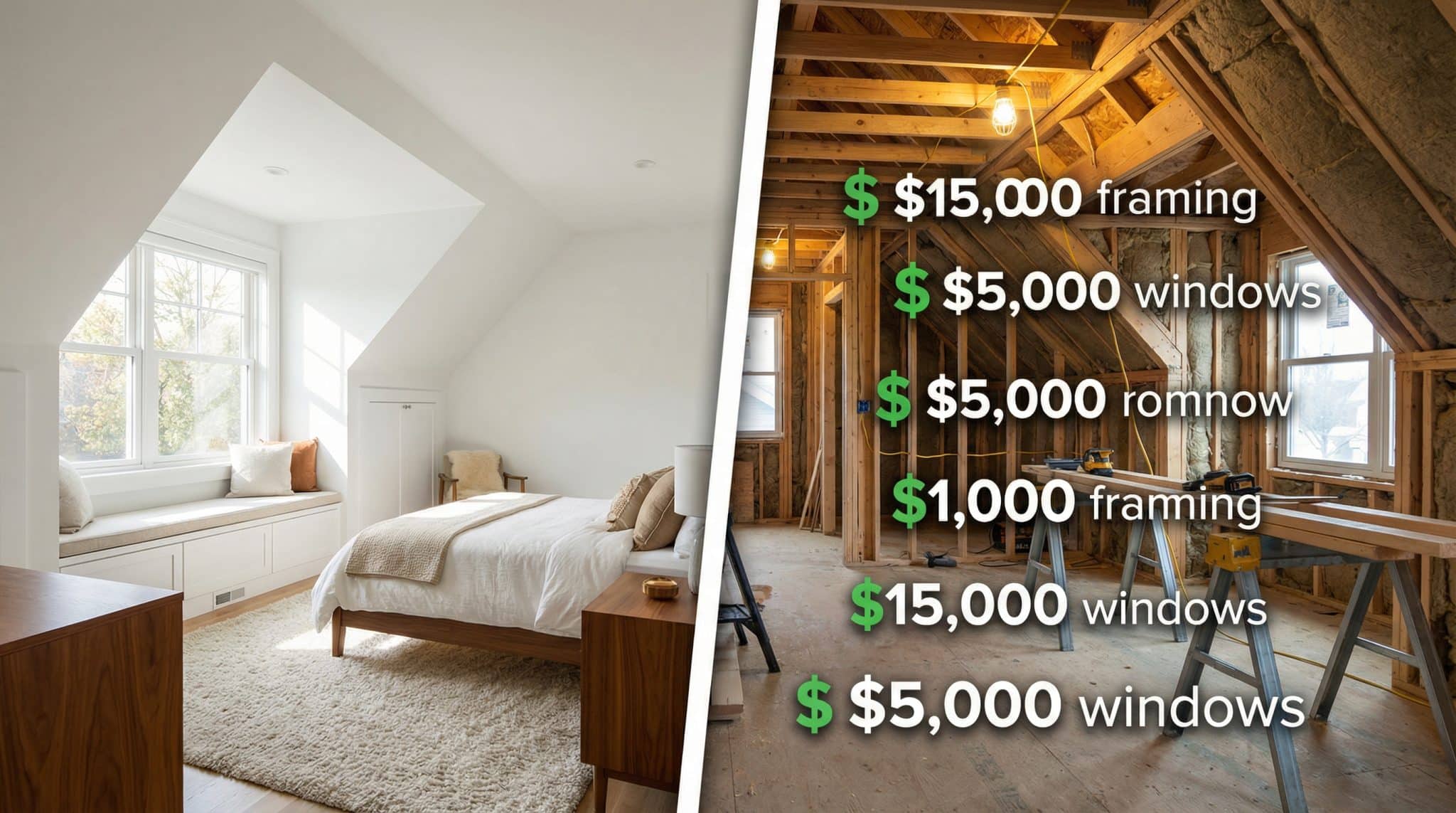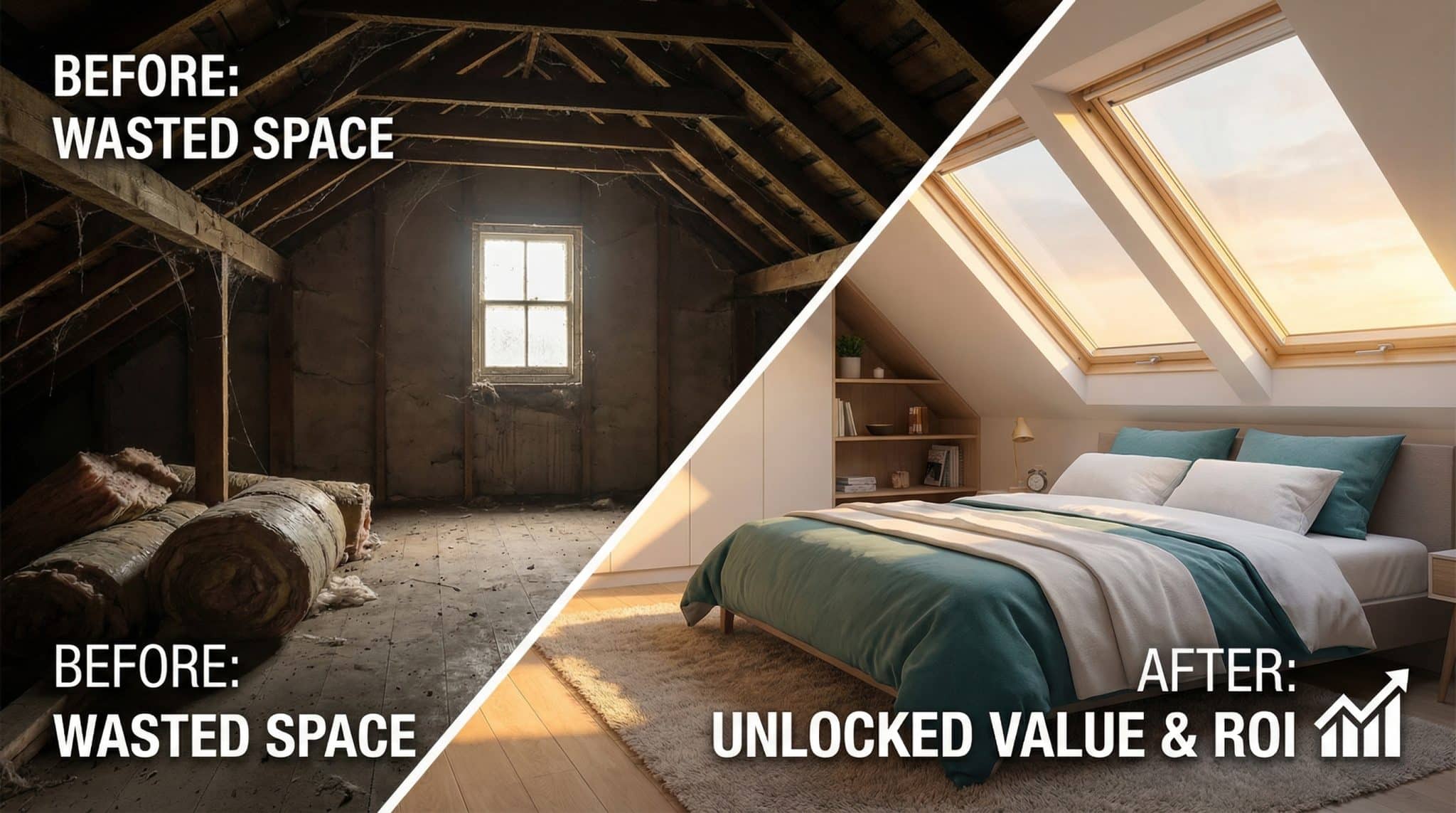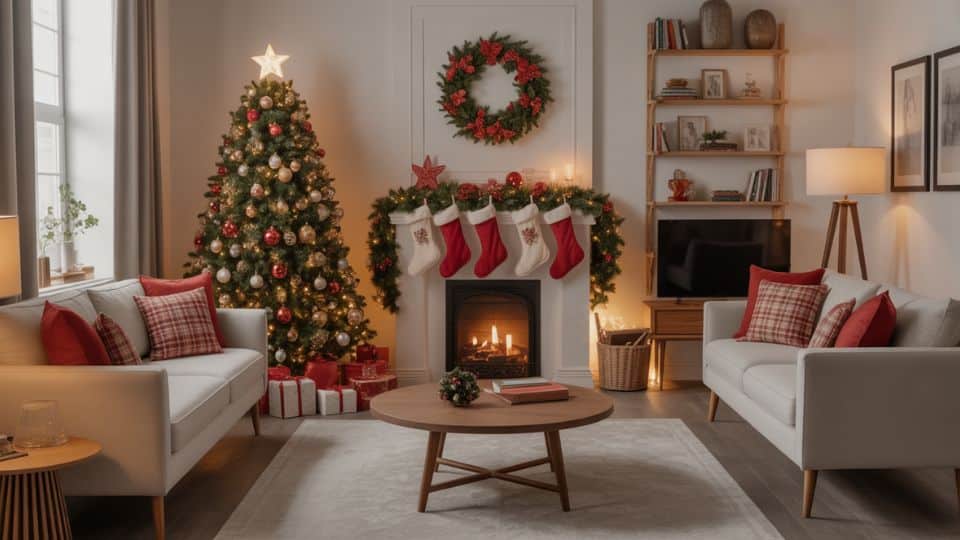Ever stood in a home improvement store staring at dozens of door options, feeling completely lost?
You’re not alone. With various types of doors available, selecting the right one can be a daunting task.
But here’s the thing – the perfect door isn’t just about looks. It needs to match your space, fit your budget, and work with your actual lifestyle.
Whether you’re replacing a squeaky bedroom door or planning a complete home makeover, understanding your options makes all the difference.
This guide breaks down everything you need to know about door types, from basic hinged doors to specialty options like revolving and Shoji doors.
Let’s find the perfect door for every room in your home.
What Are the Different Types of Doors?
Doors do more than just open and close. They define your home’s style, keep you safe, and solve specific problems in different spaces.
With numerous options available, selecting the right door can be a daunting task. We’ve organized them into four main categories to make your decision easier:
- Function-Based Doors: Focus on how they operate and move. Includes sliding, folding, and swinging doors. The best choice depends on room size and foot traffic.
- Style-Based Doors: Emphasize appearance and design, range from classic panel doors to modern flush doors. Help create your desired look and feel.
- Safety and Security Doors: Prioritize protection and safety features. Include fire doors, security doors, and blast-resistant options. Must meet building codes and safety standards.
- Specialty Doors: Serve unique purposes or special situations. Examples: pocket doors for small spaces, barn doors for rustic appeal, revolving doors for busy areas.
Each door type has specific benefits, installation requirements, and ideal uses. Some work better for interior spaces, while others are better suited for exterior applications.
Comprehending these differences helps you pick the perfect door for each room and situation.
18 Different Types of Doors for Your Home and Business
Whether you’re building new or replacing old doors, knowing your options helps you pick the perfect fit. Each door type offers specific advantages for different rooms and situations.
1. Hinged Doors (Single-leaf)
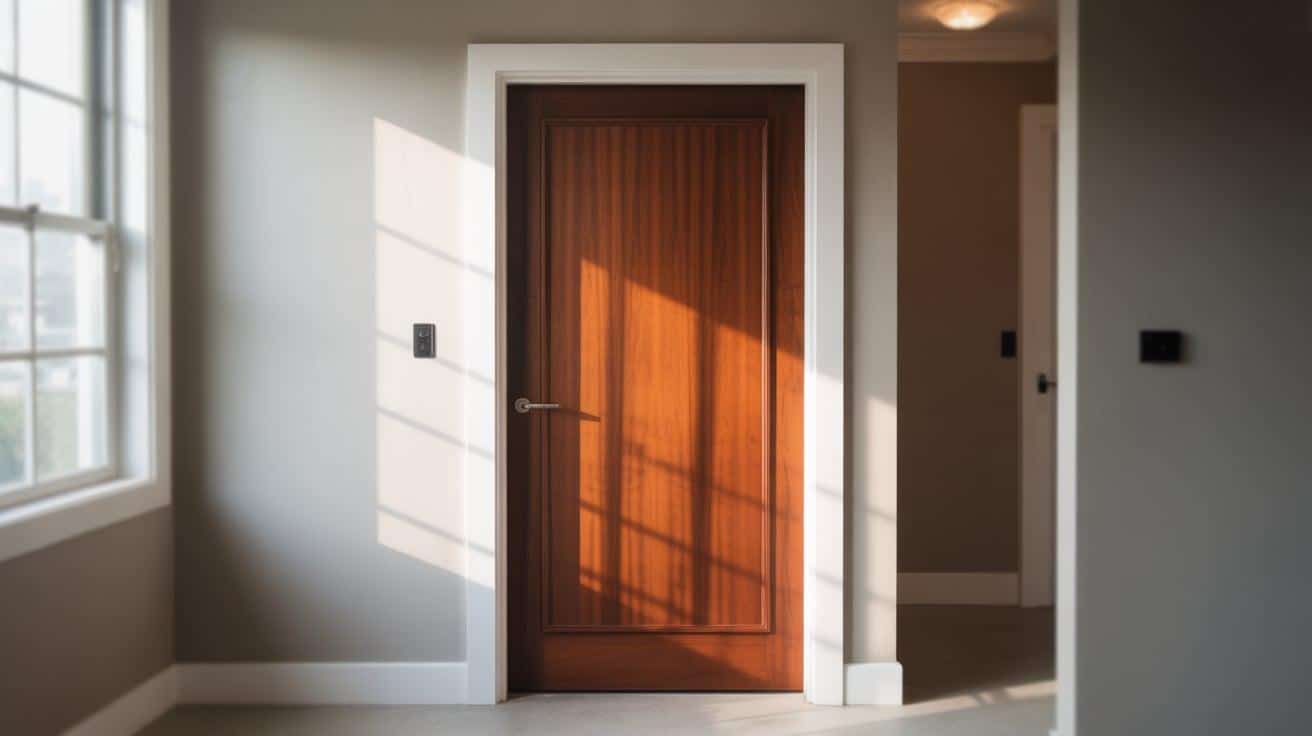
The most common door type found in homes and offices. These doors swing on hinges attached to one side of the frame. They open in one direction and take up floor space when opened.
- Best suited for: Interior rooms, bedrooms, bathrooms, and main entrances with adequate swing space.
- Security level: Medium to high with quality materials and locks. Steel and solid wood offer better protection than hollow core.
- Cost range: $50-$500 basic models, $200-$2,000 premium materials.
2. Double Doors
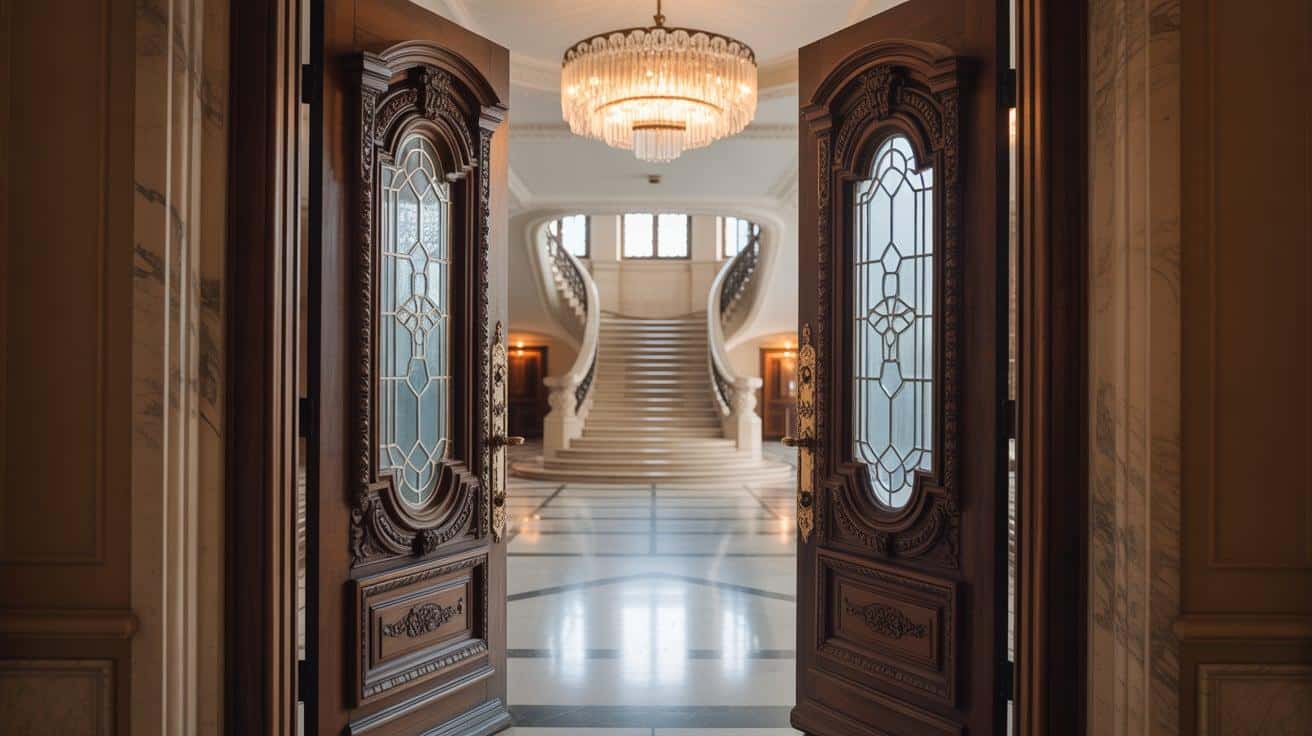
Two door panels that open from the center, creating a wide entrance. Both panels can open together or separately. Common in formal entries and rooms needing wider access.
- Best suited for: Grand entrances, large rooms, patios, and wheelchair-accessible spaces.
- Security level: Medium with proper locks on both panels. Coordination between panels affects security.
- Cost range: $300-$1,200 standard pairs, $800-$4,000 high-end custom designs.
3. Sliding Doors
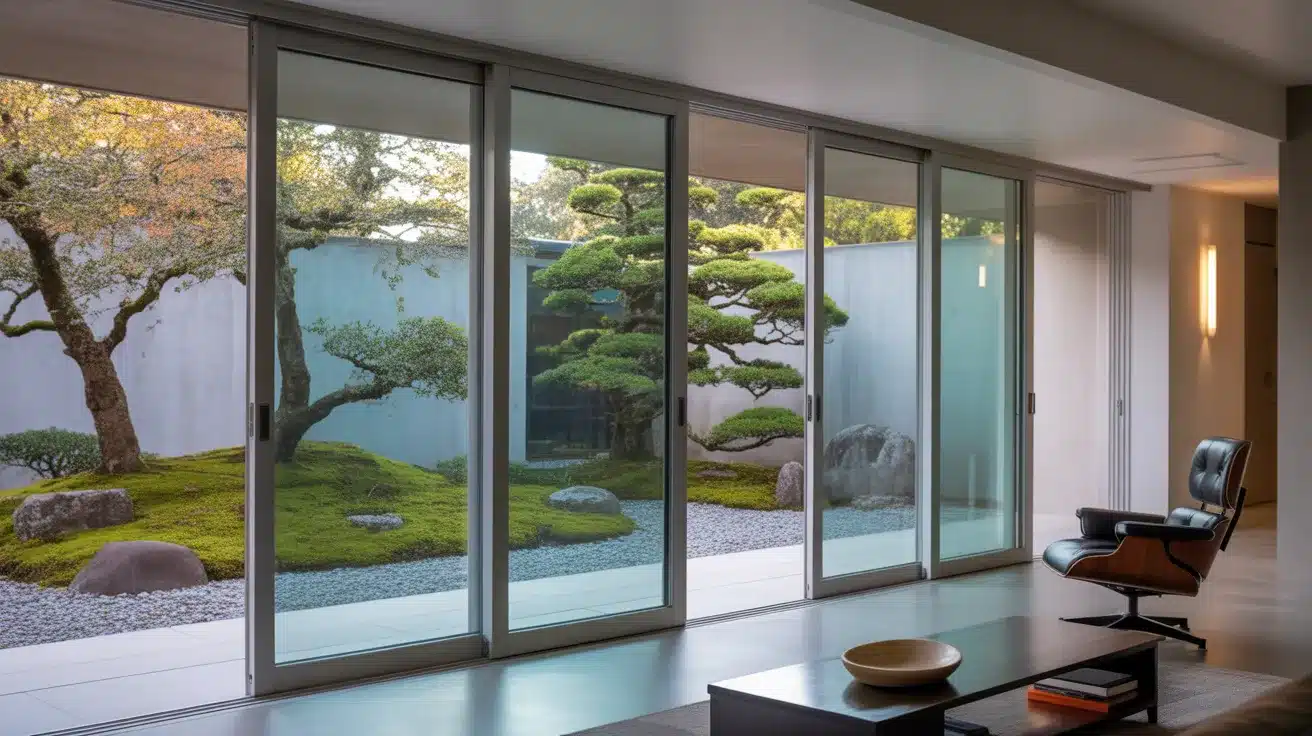
Doors that move horizontally along a track system. They don’t swing into rooms, making them perfect for tight spaces. Glass versions are popular for patios and modern homes.
- Best suited for: Small rooms, closets, patios, areas with limited swing space.
- Security level: Lower than hinged doors due to the use of track systems. The glass requires reinforcement for added security.
- Cost range: $100-$800 basic sliding, $500-$3,000 glass patio doors.
4. Pocket Doors
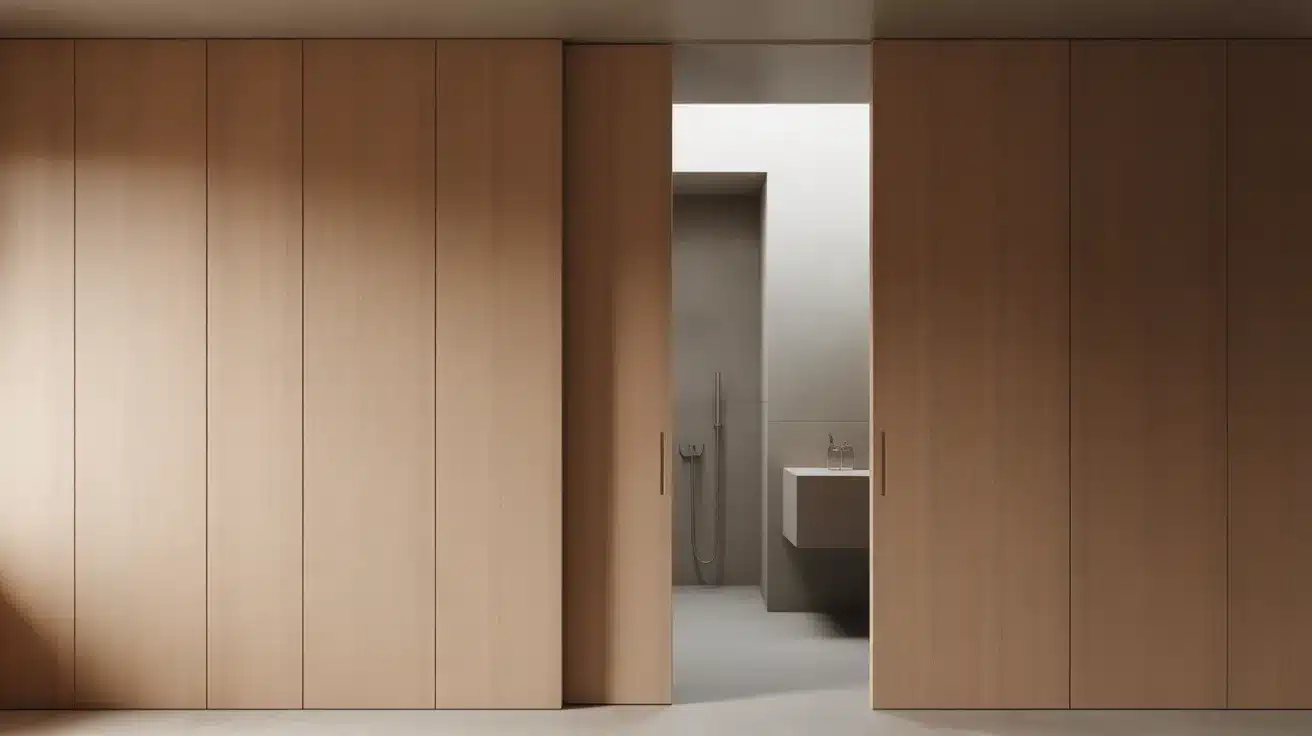
Sliding doors that disappear into a wall cavity when opened. They save maximum space since the door completely hides inside the wall structure.
- Best suited for: Bathrooms, small bedrooms, closets, and tight spaces, blocking furniture.
- Security level: Lower due to lightweight construction and simple latches.
- Cost range: $200-$700 for door and hardware, $300-$800 for installation costs.
5. Bifold (Folding) Doors
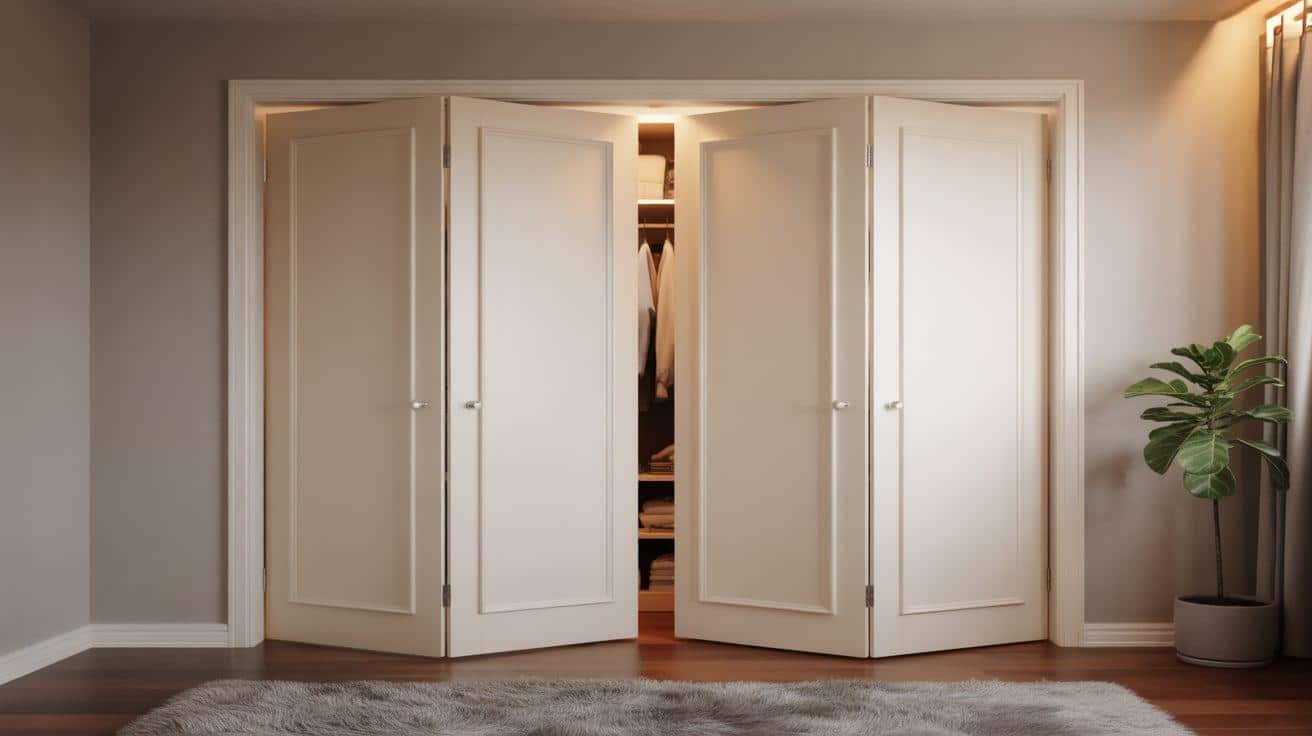
Doors made of two or more panels connected by hinges that fold against each other when opened. They require less clearance than swing doors but more than sliding doors.
- Best suited for: Closets, laundry rooms, pantries, and room dividers with partial opening needs.
- Security level: Low to medium. Multiple connection points create weak spots.
- Cost range: $30-$300 basic closet versions, $200-$1,500 room divider styles.
6. Barn Doors
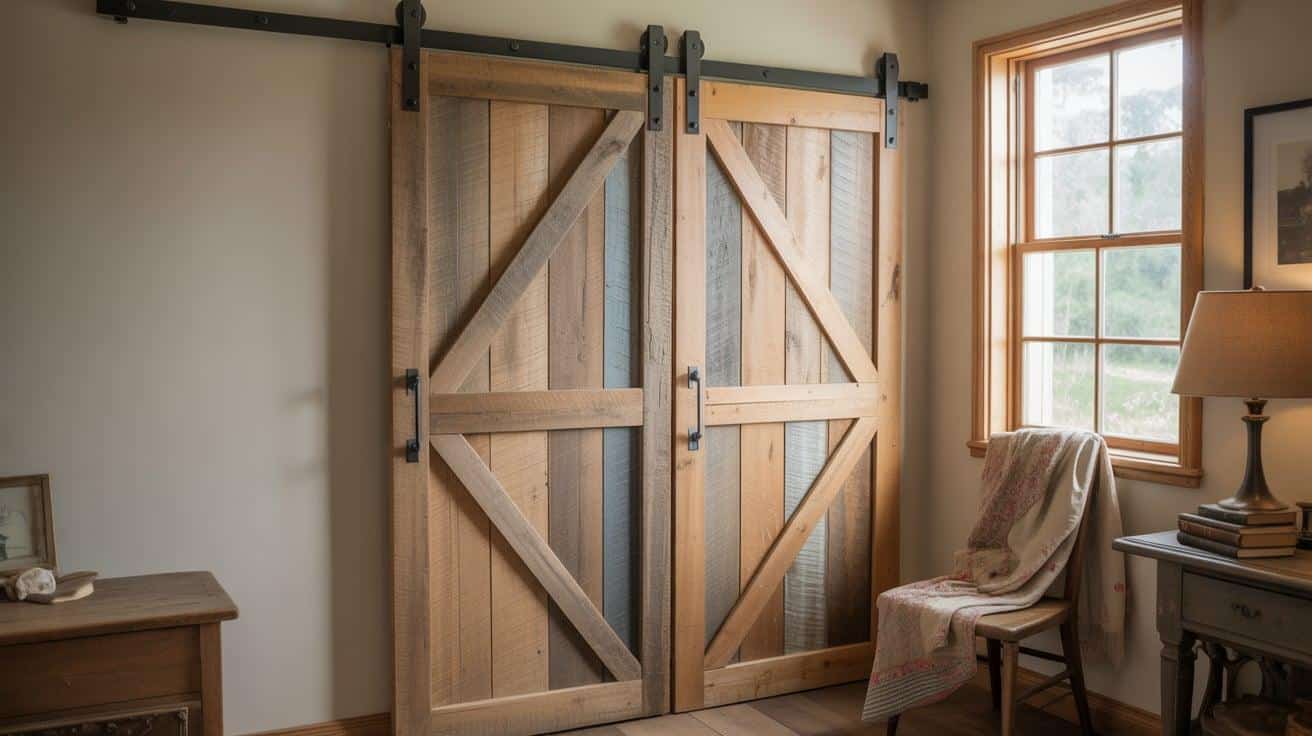
Rustic-style doors that slide along an exposed track system mounted above the door opening. They add character while saving floor space compared to swing doors.
- Best suited for: Farmhouse interiors, bedrooms, bathrooms, and country or industrial-style spaces.
- Security level: Low to medium. Exposed hardware reduces security effectiveness.
- Cost range: $150-$600 basic barn doors, $400-$2,000 reclaimed wood custom designs.
7. Pivot Doors
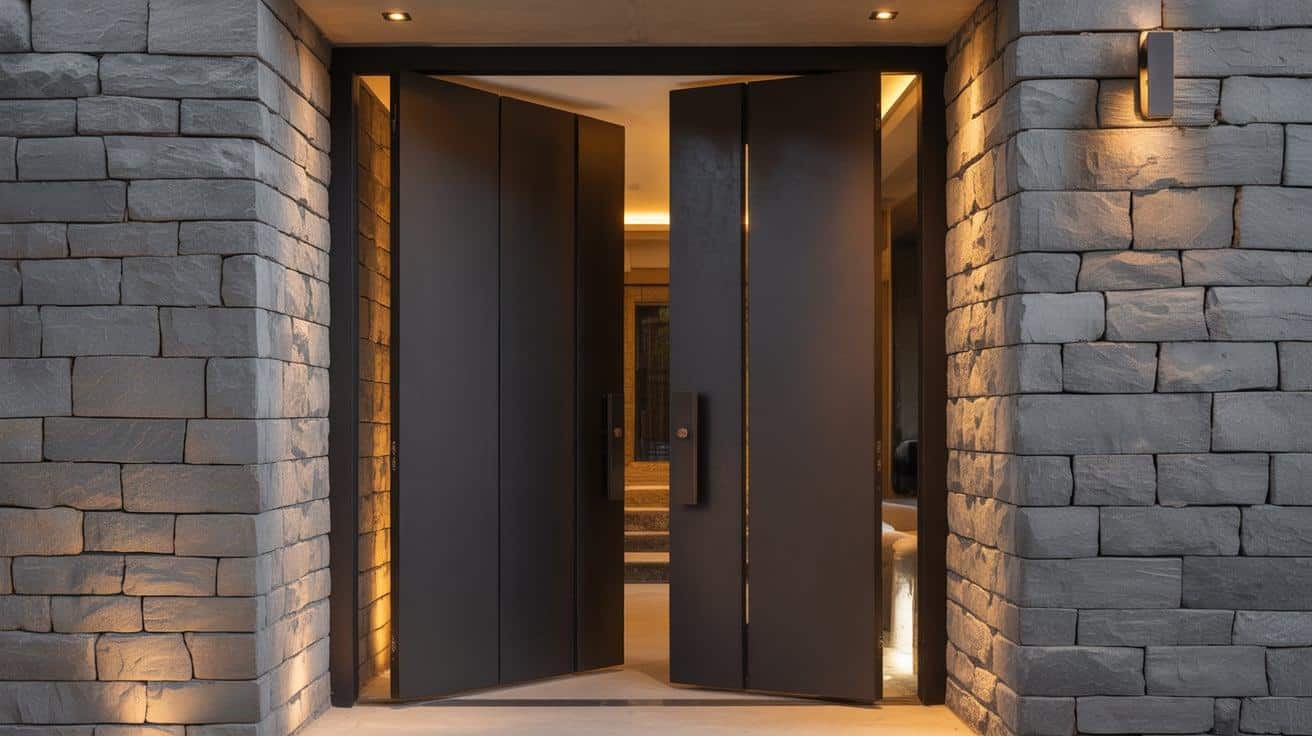
Doors that rotate on a central pivot point instead of side hinges. They can be much larger and heavier than traditional doors, creating dramatic entrances.
- Best suited for: Modern homes, commercial buildings, grand entrances, contemporary, and impressive looks.
- Security level: High with quality materials. The pivot system supports heavy and secure construction.
- Cost range: $800-$3,000 for residential versions, $2,000-$10,000+ for large commercial custom projects.
8. Accordion Doors
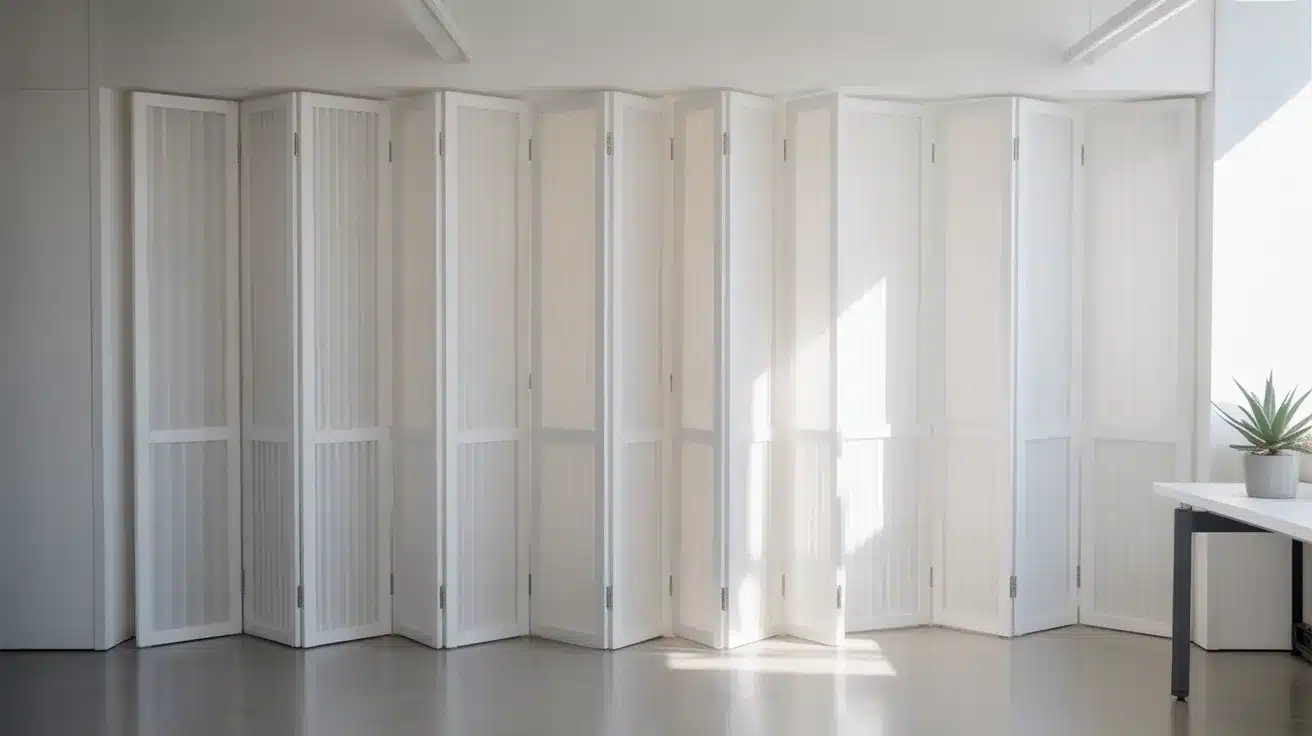
Multi-panel doors that fold back and forth like an accordion when opened. They can close off large openings while taking minimal space when open.
- Best suited for: Room dividers, large closets, laundry areas, and temporary partitions.
- Security level: Low. Multiple fold points and lightweight construction are unsuitable for security.
- Cost range: $100-$500 basic residential, $300-$1,200 commercial-grade materials.
9. Panel Doors
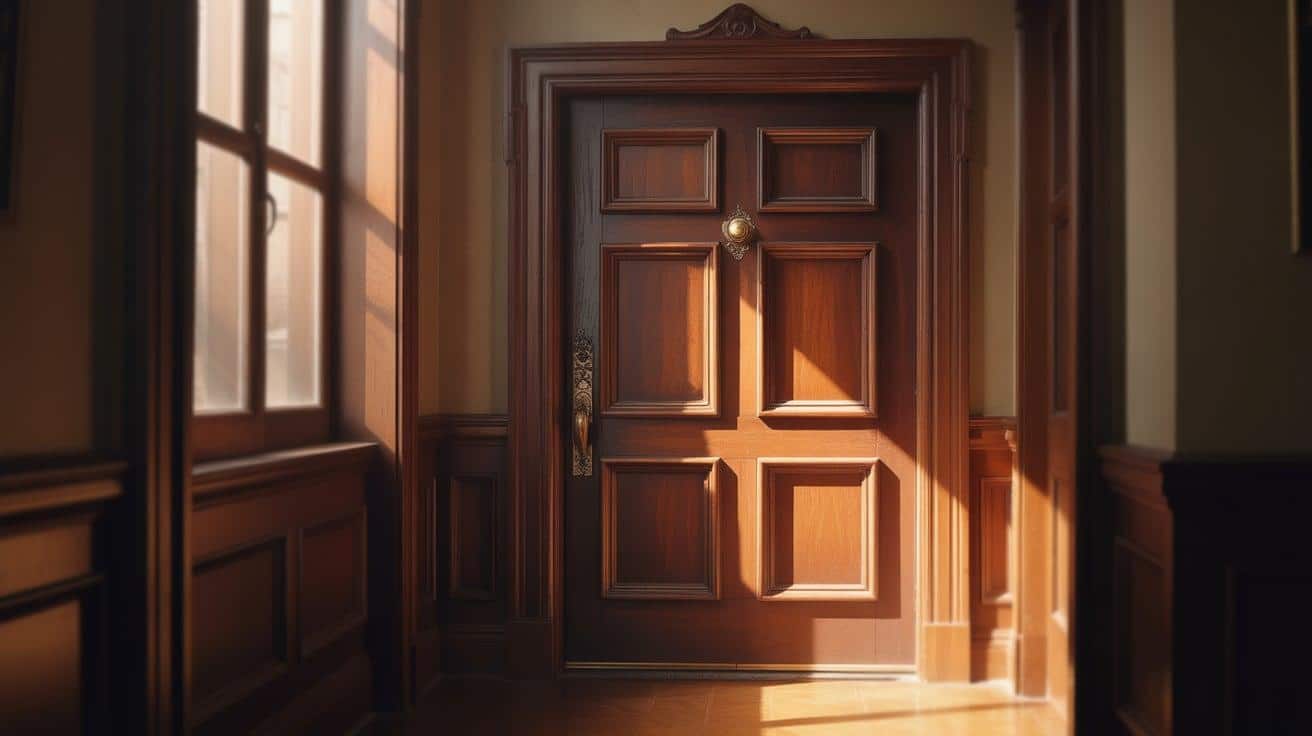
Traditional doors feature raised or recessed rectangular sections, known as panels. These classic designs are versatile, working well in both traditional and modern settings with various panel configurations.
- Best suited for: Traditional homes, formal dining rooms, bedrooms, classic style preferences.
- Security level: Medium to high, depending on core material. Solid wood panels provide better security.
- Cost range: $80-$400 standard panels, $300-$1,500 solid wood custom configurations.
10. Flush Doors
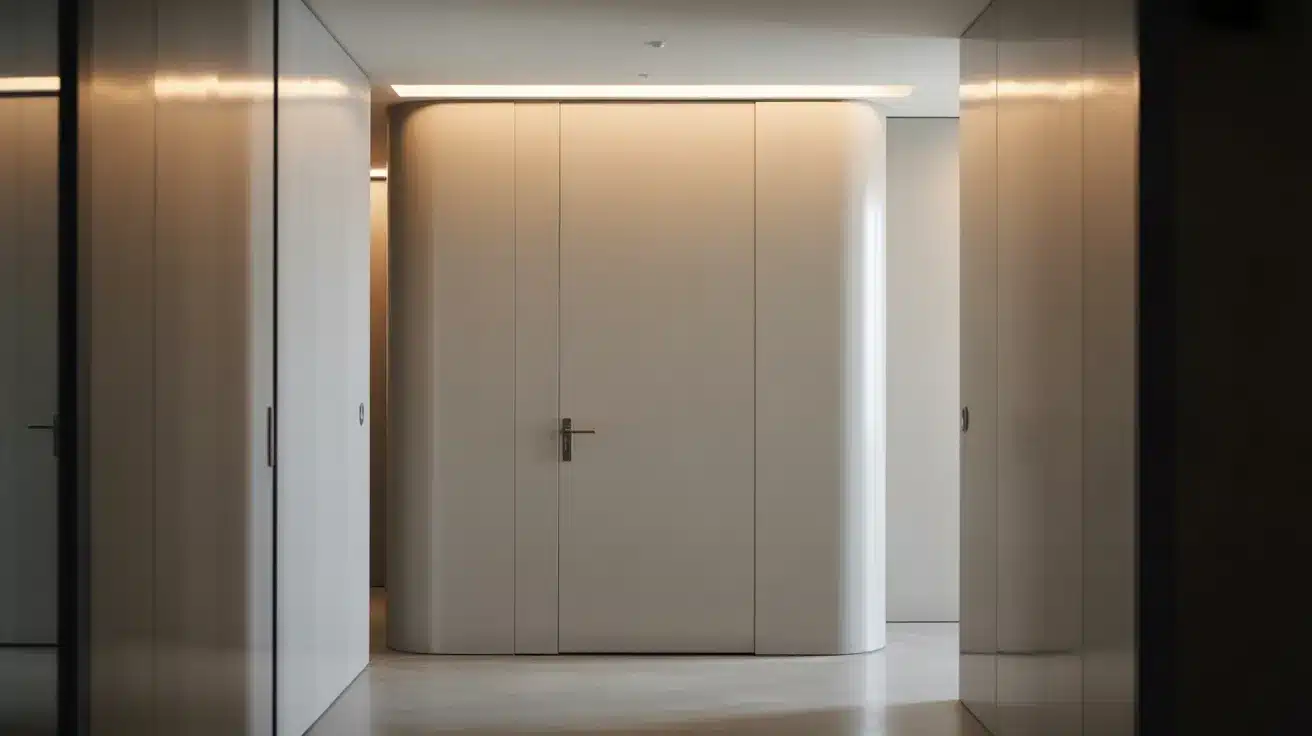
Smooth, flat doors without raised panels or decorative elements. They offer clean lines that work well in modern and minimalist design schemes.
- Best suited for: Modern homes, offices, contemporary interiors, simple, uncluttered appearance.
- Security level: Medium solid core, low hollow core. Surface doesn’t indicate construction quality.
- Cost range: $40-$200 for basic hollow core, $150-$600 for solid core with quality finishes.
11. French Doors
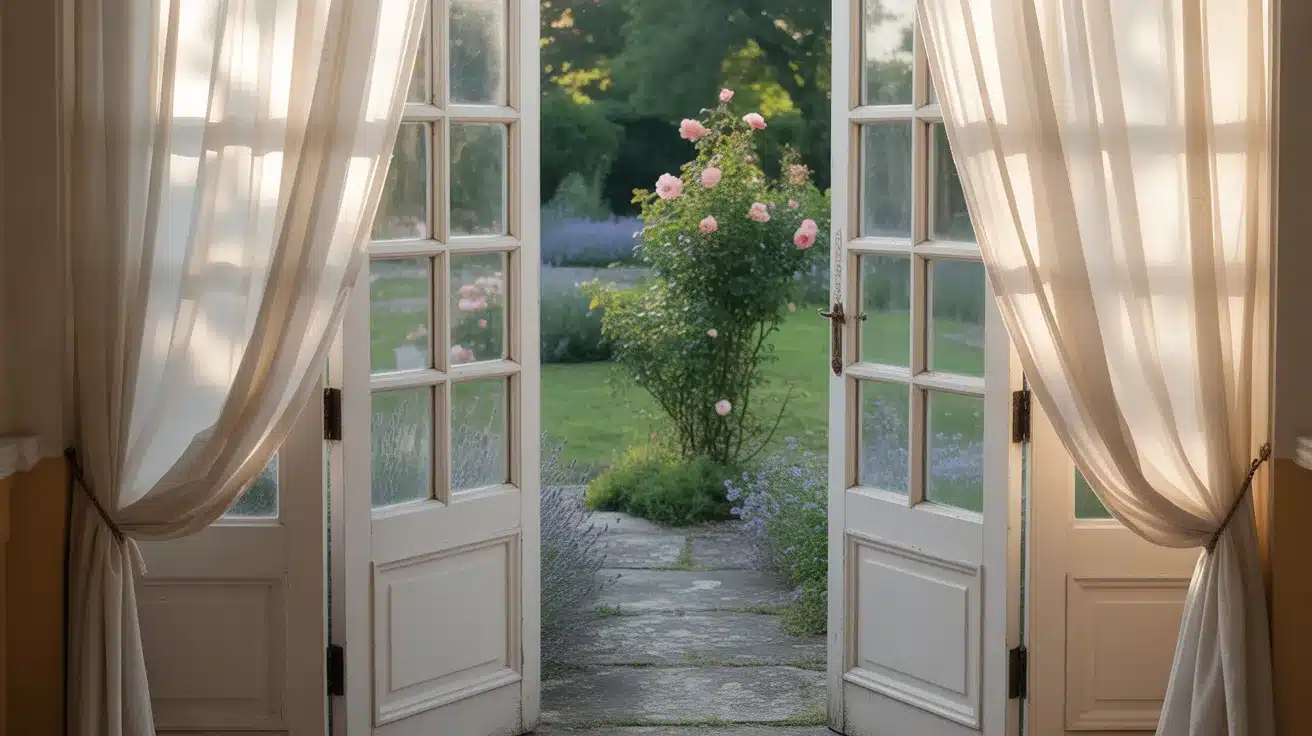
Doors with multiple glass panels separated by decorative frames called muntins. They allow light to pass through while maintaining separation between spaces.
- Best suited for: Patios, gardens, dining rooms, natural light flow with room definition.
- Security level: Medium with proper locks and reinforced glass. Large glass areas need proper glazing.
- Cost range: $300-$1,500 standard pairs, $800-$4,000 quality wood specialty glass.
12. Dutch (Stable) Doors
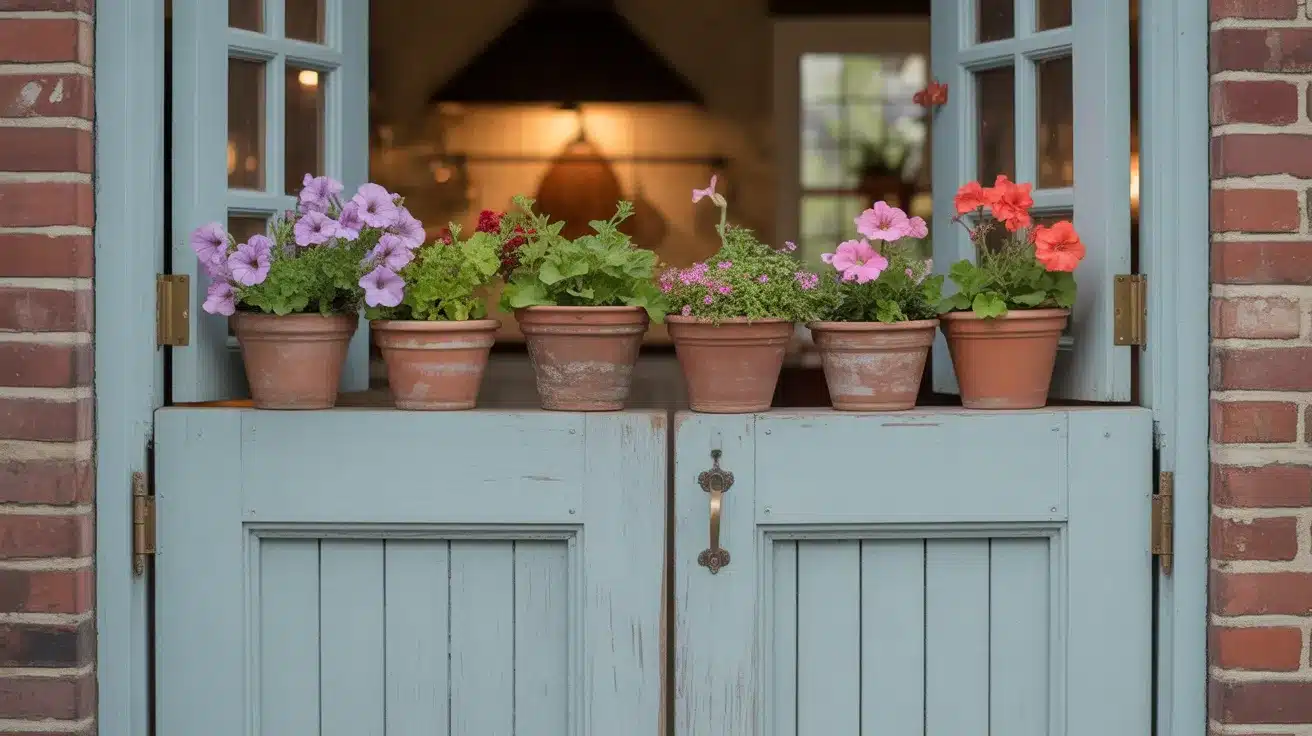
Split horizontally into two halves that can open independently. The top can open for ventilation and conversation while the bottom stays closed for security.
- Best suited for: Kitchens, back entries, farmhouse styles, flexible ventilation, and interaction.
- Security level: Medium when both halves are locked. The split design provides partial security while allowing airflow.
- Cost range: $200-$800 for basic Dutch doors, $500-$2,000for for solid wood quality hardware.
13. Louvered Doors
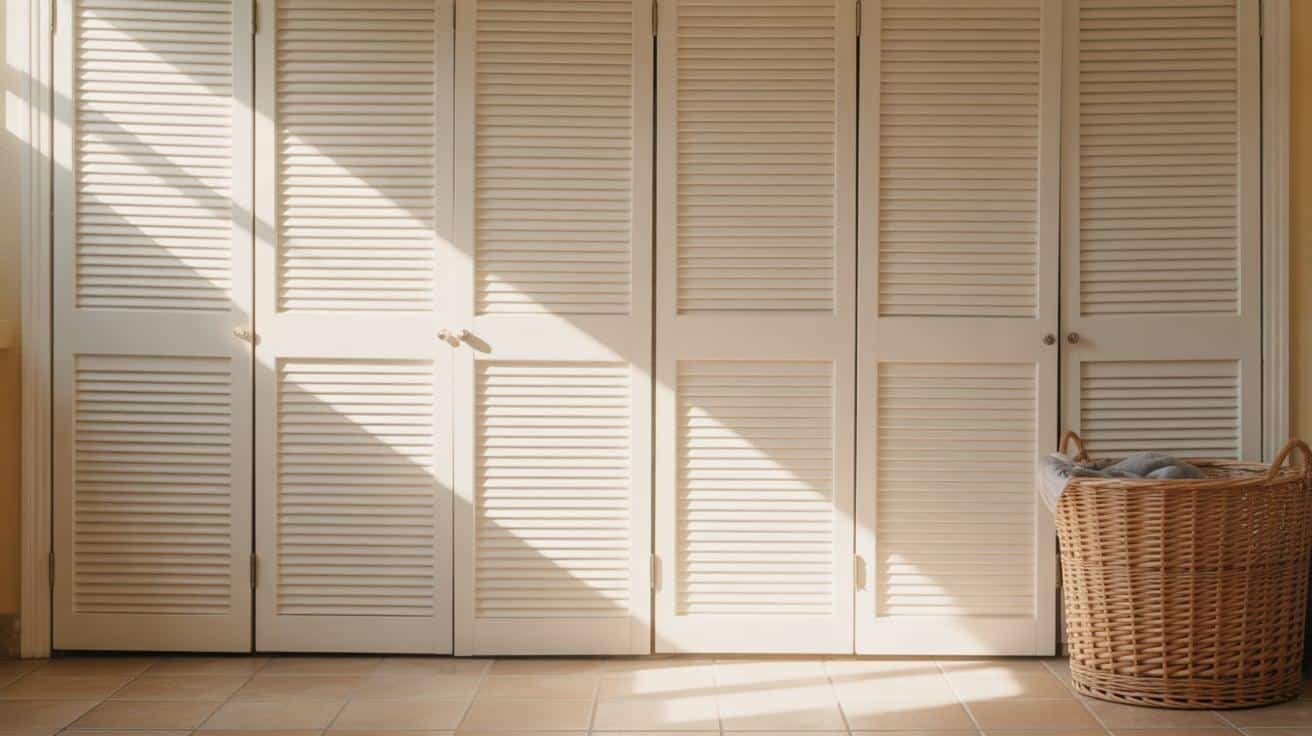
Doors with horizontal slats that allow air circulation while providing privacy. The angled slats block direct view while permitting ventilation.
- Best suited for: Closets, laundry rooms, water heater areas, and ventilation without a whole opening.
- Security level: Low due to the use of slat construction. Best for interior ventilation over security.
- Cost range: $50-$300 standard louvered, $150-$600 quality wood adjustable louvers.
14. Fire Doors
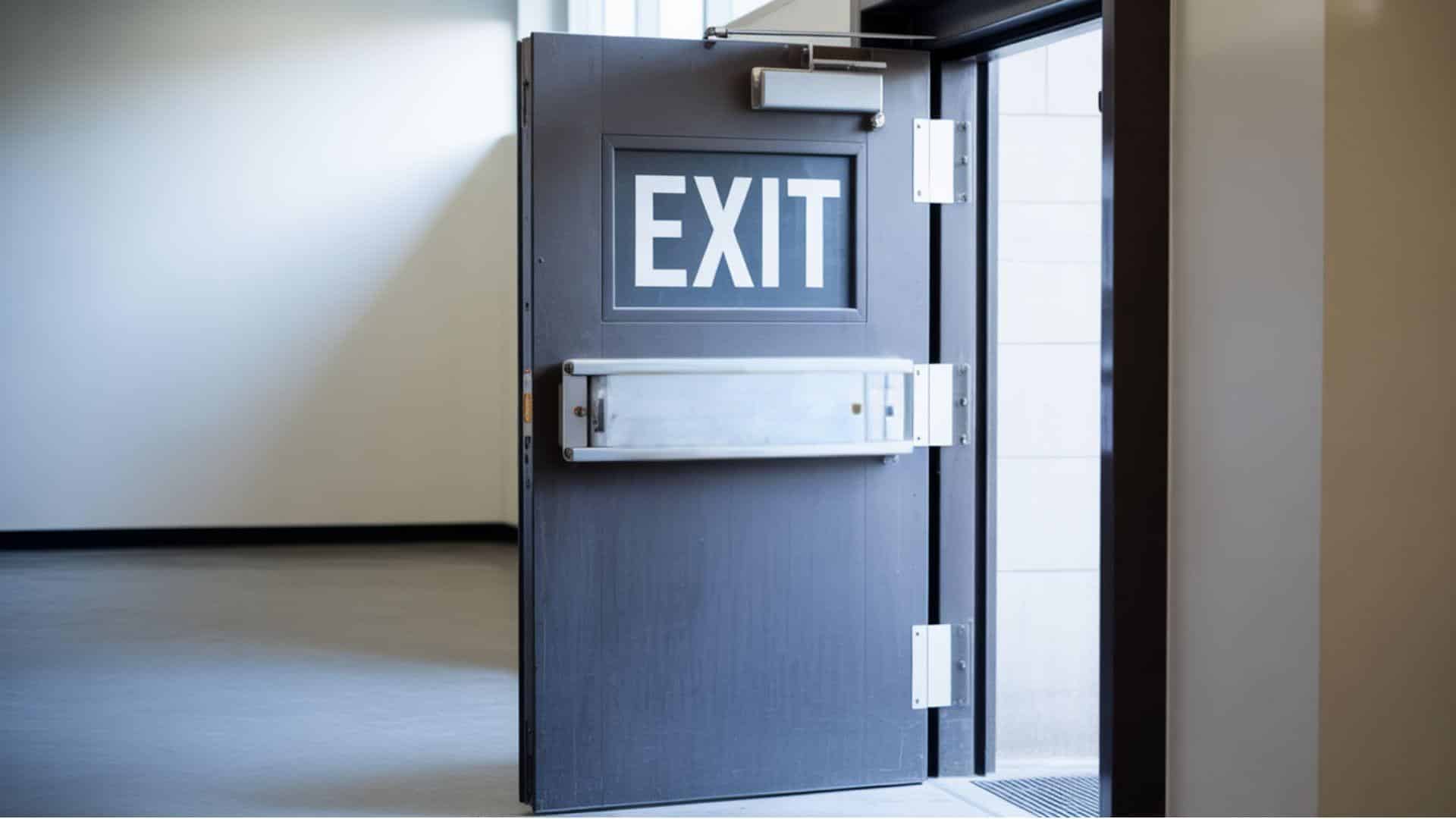
Specially constructed doors are designed to resist fire for specific periods. They contain fire-rated materials and self-closing mechanisms required by building codes.
- Best suited for: Commercial buildings, apartment complexes, stairwells, and areas requiring fire safety compliance.
- Security level: High due to solid construction. Fire-rated materials often provide security benefits.
- Cost range: $200-$800 basic fire doors, $500-$2,000 high-rated commercial premium hardware.
15. Storm Doors
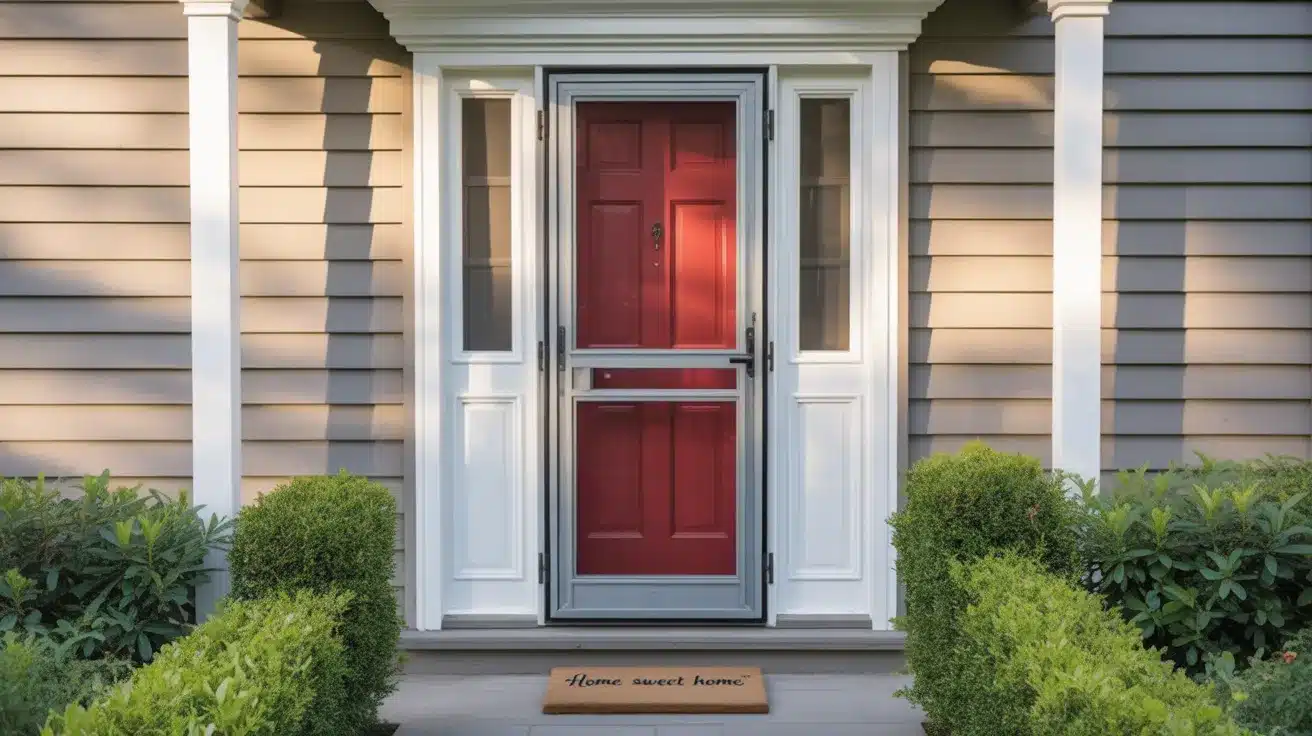
Exterior doors are installed in front of the main entry doors for weather protection. They feature glass or screen panels that can be interchanged seasonally.
- Best suited for: Front and back entrances in harsh weather conditions, providing extra insulation and protection.
- Security level: Low to medium. Additional barrier, but shouldn’t replace paramount door security.
- Cost range: $100-$400 for basic storm doors, $300-$1,000 for high-quality materials, with multiple options available.
16. Security Doors (Steel-frame)
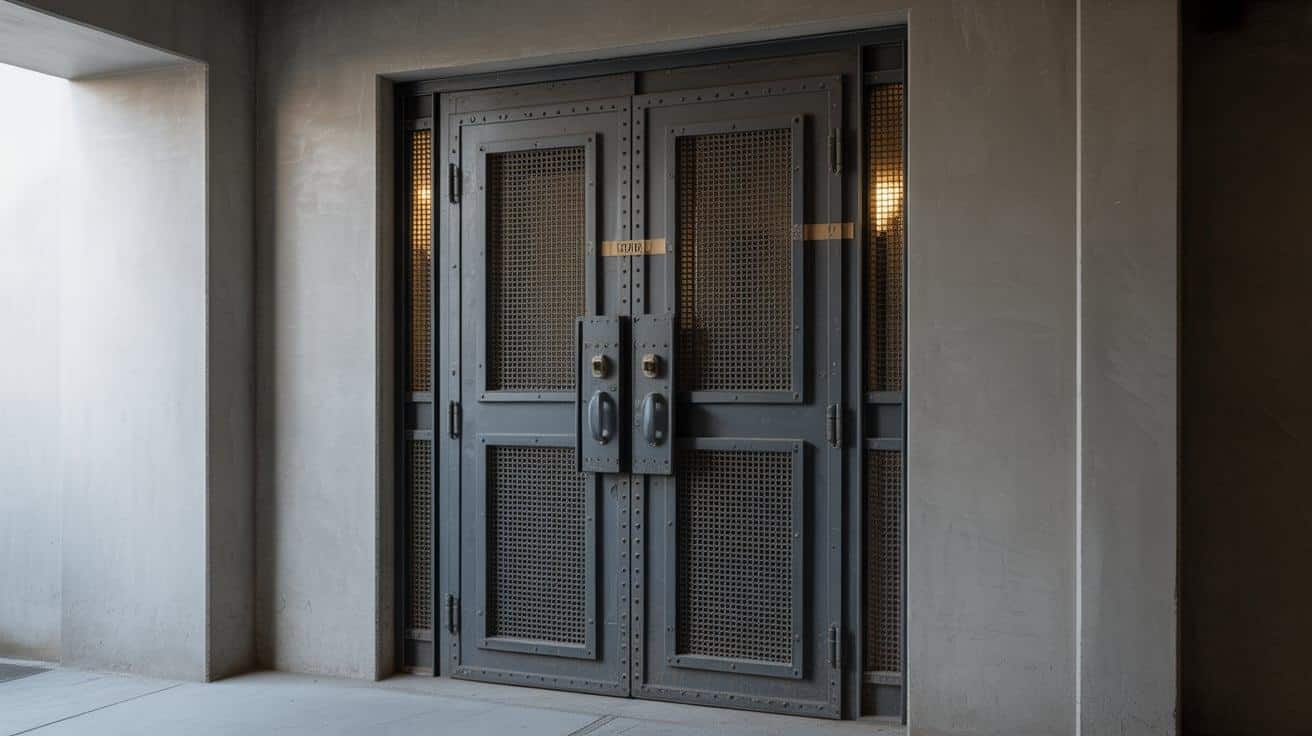
Heavy-duty doors are explicitly built for maximum security. They feature reinforced frames, multiple locking points, and materials designed to resist forced entry.
- Best suited for: High-crime areas, commercial properties, safe rooms, maximum security priority.
- Security level: Very high. Multiple locks, reinforced construction, tamper-resistant hardware.
- Cost range: $300-$1,500 residential security, $800-$5,000+ commercial-grade advanced features.
17. Revolving Doors
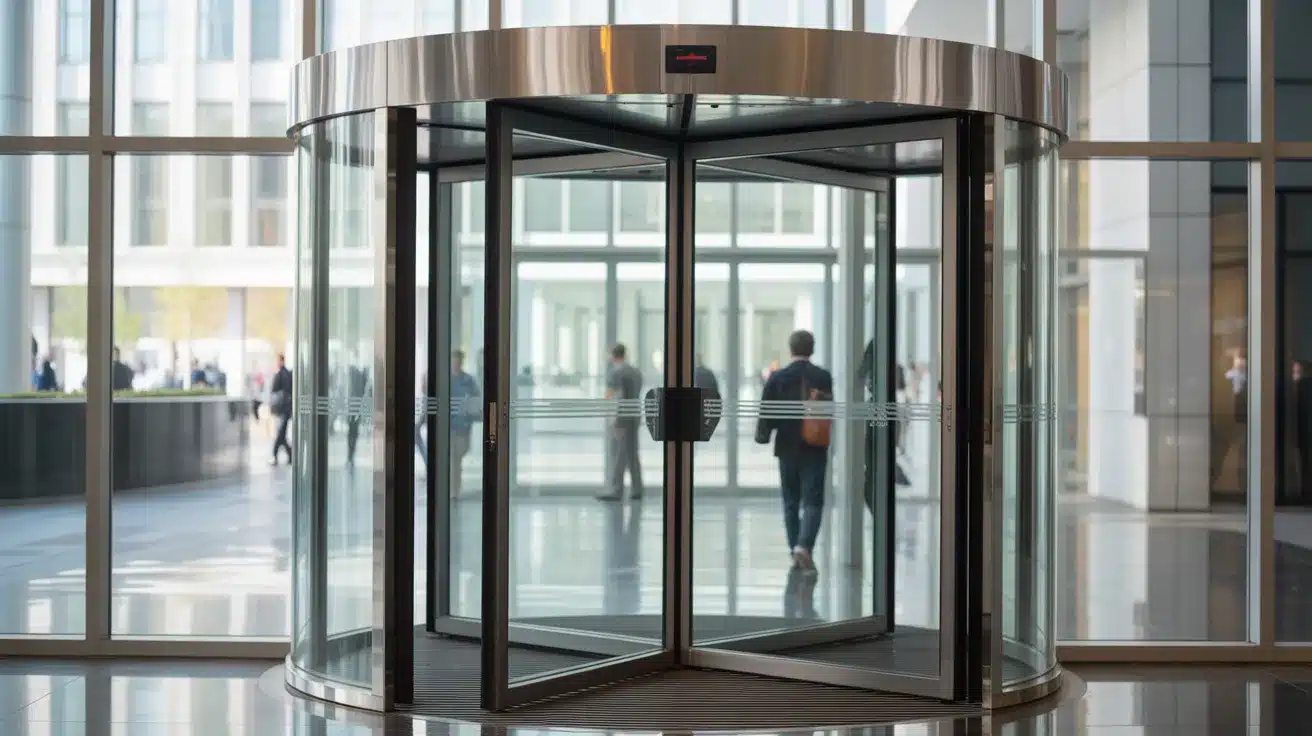
Circular doors with three or four panels that rotate around a central axis. They maintain climate control by preventing direct air exchange between spaces.
- Best suited for: Commercial buildings, hotels, office towers, and high-traffic areas with energy efficiency needs.
- Security level: Medium to high. Controlled access and forced entry difficulty, needs monitoring.
- Cost range: $15,000-$50,000 standard commercial, $30,000-$100,000+ high-end custom installations.
18. Shoji (Japanese Sliding Paper) Doors
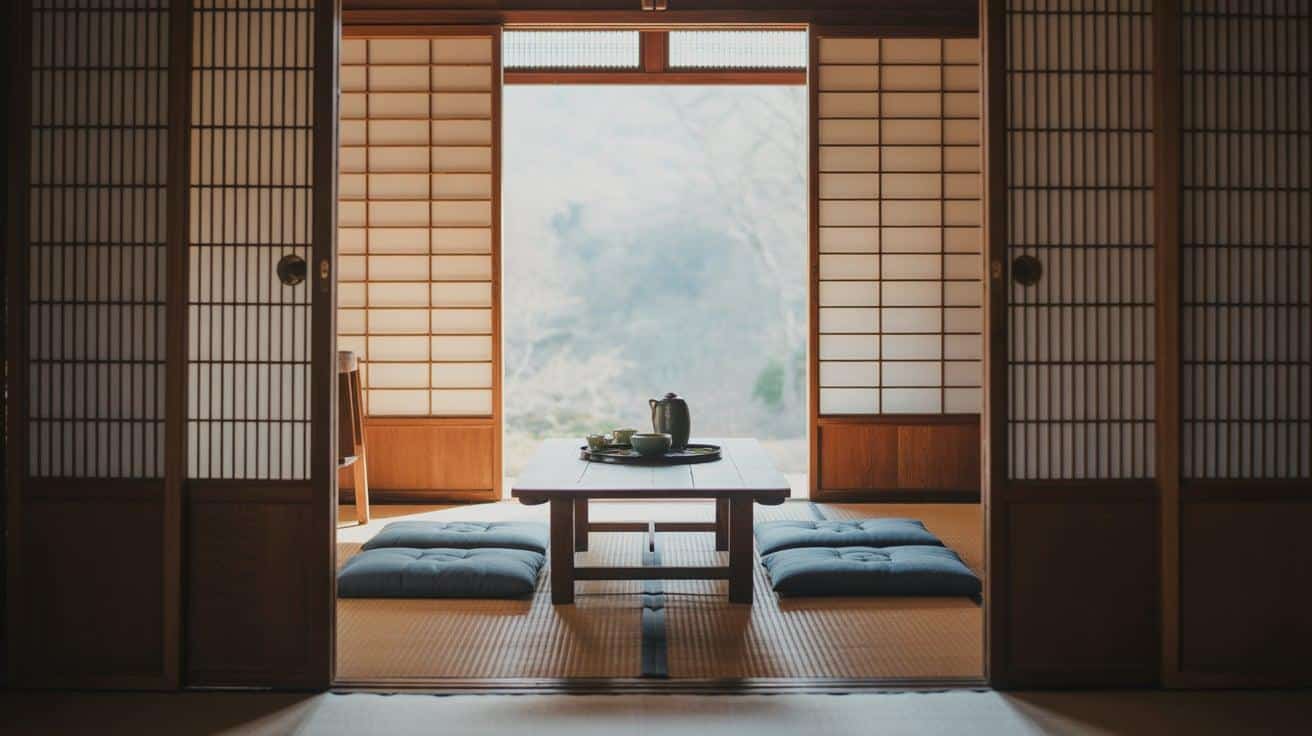
Traditional Japanese doors have wooden frames and translucent paper or fabric panels. They slide on tracks and provide soft, light-filtering effects.
- Best suited for: Asian-inspired interiors, meditation rooms, bedrooms, soft light diffusion with privacy.
- Security level: Very low due to paper construction. The interior room division rather than security.
- Cost range: $100-$500 for basic Shoji doors, $300-$1,200 for authentic materials and traditional construction.
How to Choose the Right Type of Door for Your Home?
Selecting the perfect door means balancing practical needs with your home’s style. Here are the key factors to consider:
- Measure your space first: Hinged doors need 3-4 feet of swing clearance. Choose sliding or pocket doors for tight spaces where swing room is limited.
- Match the door to the room usage: High-traffic areas, such as main entries, require solid-core or steel doors. Bedrooms and closets can utilize lighter, hollow-core options.
- Consider your home’s style: Traditional homes suit panel or French doors. Modern spaces look better with flush doors or pivot doors with clean lines.
- Pick materials for the location: Exterior doors need weather-resistant steel or fiberglass. Interior doors can be made of wood or composite, depending on your budget and style preferences.
- Consider maintenance and budget: Wood doors require regular upkeep but offer a classic appeal. Steel and composite cost more upfront but require less maintenance over time.
- Plan for light and privacy needs: Glass panel doors, such as French doors, allow natural light to flow freely between rooms. Solid doors provide better sound blocking and privacy.
Conclusion
Now you know the difference between various types of doors and how to select the right one for each space.
Remember, the best door combines function, style, and budget in a way that works for your specific needs.
Don’t rush the decision – take time to measure your space, consider how often the door will be used, and think about your home’s overall style.
Start with the most critical rooms, such as your main entrance and master bedroom, and then work your way through the rest of your home.
Ready to upgrade your doors?
Begin by measuring your current openings and identifying which rooms need the most attention. Your perfect doors are waiting!
